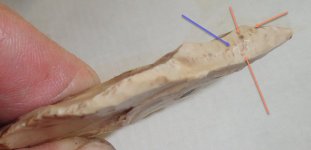bravowhiskey
Bronze Member
Upvote
0
I'll try and find out what it is but San Saba is a basal-notched point with shallow notches...
San Saba Projectile Point
Edit:
Maybe Marcos since I can't find anything closer...
https://www.projectilepoints.net/Points/Marcos.html
Its a Marshall base tang imo.
